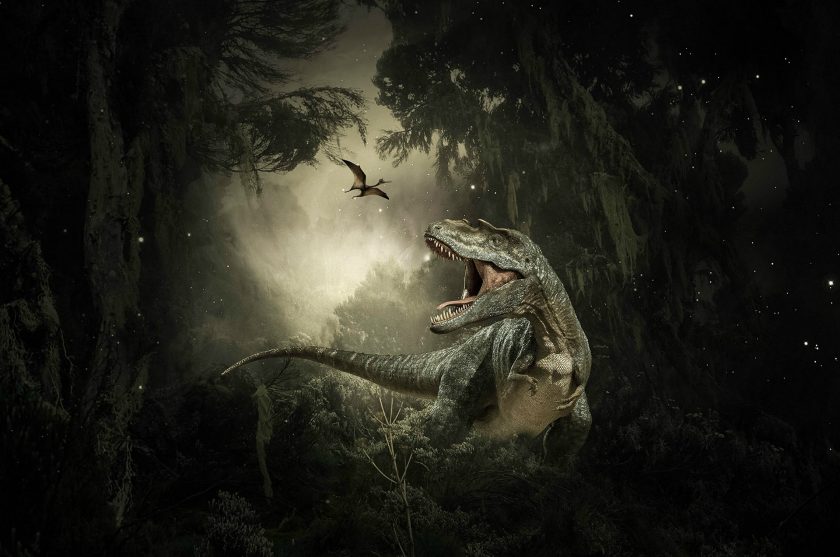Dust Confirms Mass Dino Killer
October 29, 2021

Researchers believe they have closed the case of what killed the dinosaurs, definitively linking their extinction with an asteroid that slammed into Earth 66 million years ago by finding a key piece of evidence: asteroid dust inside the impact crater.
Death by asteroid rather than by a series of volcanic eruptions or some other global calamity has been the leading hypothesis since the 1980s, when scientists found asteroid dust in the geologic layer that marks the extinction of the dinosaurs. This discovery painted an apocalyptic picture of dust from the vaporized asteroid and rocks from impact circling the planet, blocking out the sun and bringing about mass death through a dark, sustained global winter — all before drifting back to Earth to form the layer enriched in asteroid material that’s visible today.
In the 1990s, the connection was strengthened with the discovery of the 125-milewide Chicxulub impact crater beneath the Gulf of Mexico that is the same age as the rock layer. The new study seals the deal, researchers said, by finding asteroid dust with a matching chemical fingerprint within that crater at the precise geological location that marks the time of the extinction.
The study, which was published in Science Advances in February 2021, is the latest to come from a 2016 International Ocean Discovery Program mission co-led by the Jackson School of Geosciences that collected nearly 3,000 feet of rock core from the crater buried under the seafloor. Research from this mission has helped fill in gaps about the impact, the aftermath and the recovery of life.
The telltale sign of asteroid dust is the element iridium — which is rare in Earth’s crust but present at elevated levels in certain types of asteroids. An iridium spike in the geologic layer found all over the world is how the asteroid hypothesis was born. In the new study, researchers found a similar spike in a section of rock pulled from the crater. In the crater, the sediment layer deposited in the days to years after the strike is so thick that scientists were able to precisely date the dust to a mere two decades after impact.
“We are now at the level of coincidence that geologically doesn’t happen without causation,” said co-author Sean Gulick, a Jackson School research professor who co-led the 2016 expedition. “It puts to bed any doubts that the iridium anomaly [in the geologic layer] is not related to the Chicxulub crater.”
Back to the Newsletter